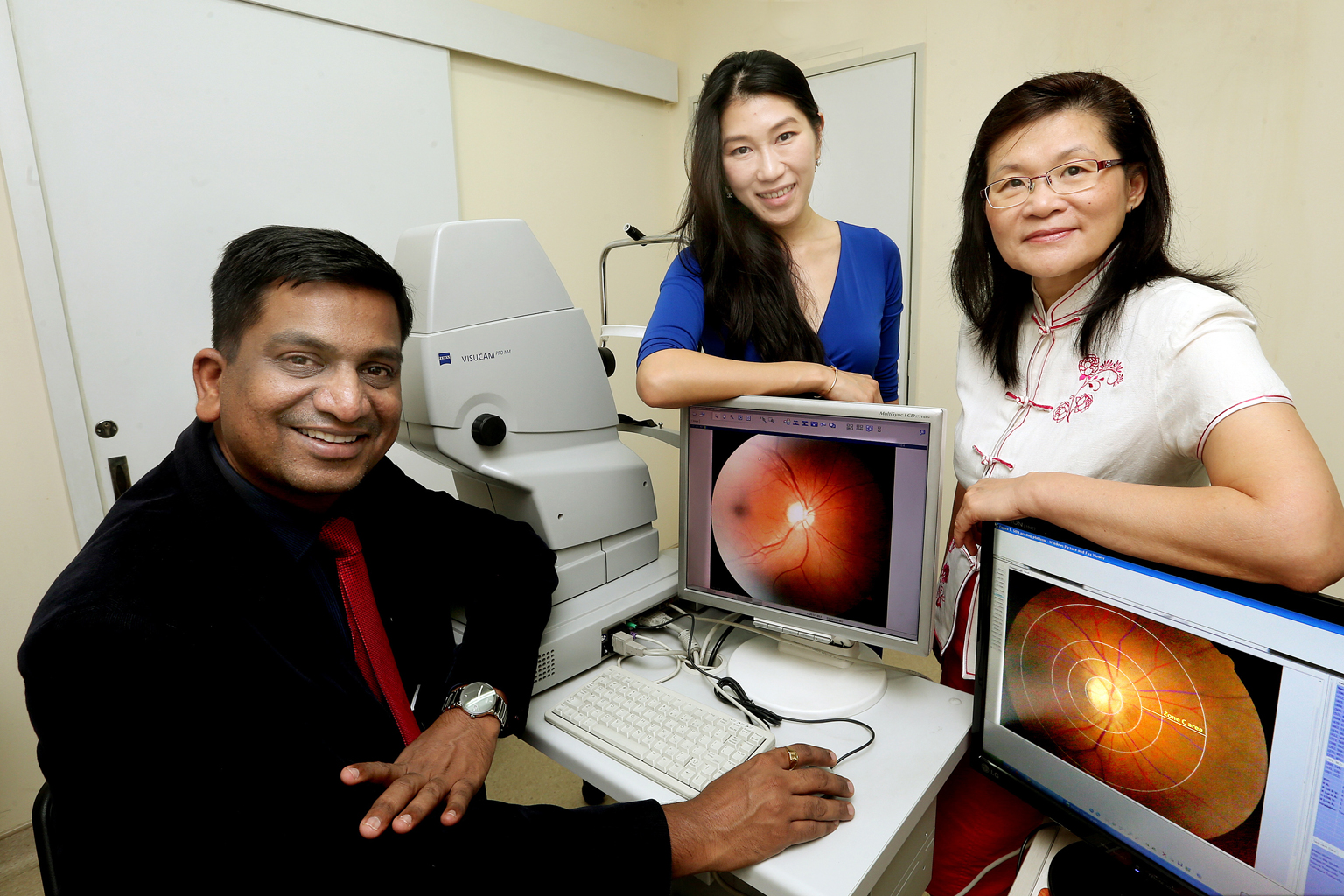Researchers eye new way to detect dengue
Their work hints at possibility of diagnosing disease with a just a smartphone photo
Sign up now: Get ST's newsletters delivered to your inbox

From left: Professor Agrawal, Dr Li and Professor Leo with photographs of retinas that they and collaborators are measuring and analysing for changes in blood vessels morphology associated with dengue infection.
ST PHOTO: LAU FOOK KONG
Lin Yangchen
Follow topic:
Imagine the day when you can tell if you have dengue by just taking a photo of your eye with a smartphone. It would allow you to get treatment faster and reduce the risk of serious illness.
Although this is now science fiction, multidisciplinary research has hinted that it could be possible in the future.
In the first study of its kind, Singapore researchers have found that blood vessels in the eye exhibit different characteristics in patients suffering from severe dengue than they do in uninfected individuals.
They made the discovery by marrying cutting-edge photography with sophisticated computer analysis and deep knowledge of dengue.
The idea of observing blood vessels in the eye, though, is not new.
"The eye is the only organ in the body where you can directly visualise the blood vessels," said National Healthcare Group Eye Institute's adjunct assistant professor Rupesh Agrawal, a study co-author.
He noted that by observing the back of the eye, or retina, doctors could detect diseases such as diabetes and high blood pressure.
The researchers realised that such observation could be applied to dengue, too, as dengue infection makes blood vessels leaky and could change their shape and form.
In the procedure, a photograph is first taken of the retina using a special camera. The diameters of the vessels are measured, as well as their crookedness and how they branch out from one another.
The researchers compared these characteristics of 62 dengue patients and 127 healthy people from 2011 to 2012.They used a locally developed program, called Singapore "I" Vessel Assessment, to make the measurements and analyse them.
Singapore Eye Research Institute collaborator Li Ling-Jun, who was part of the team that developed the software, said computerisation could improve healthcare practice and make it more affordable.
The study, published in the journal Scientific Reports last year, reported that the blood vessels in the retinas of dengue patients in Singapore are likely to be more crooked and of larger diameter than in healthy individuals.
The state-of-the-art camera system used by the researchers in the study is expensive and bulky, given the difficulty of projecting a three-dimensional object onto a two dimensional photograph accurately and clearly.
Professor Tjin Swee Chuan, director of The Photonics Institute at Nanyang Technological University, said the institute is developing a lens adapter to enable consumer digital cameras to take high-quality images of the retina. Healthcare device maker D-Eye has also introduced a lens attachment with an app that enables smartphones to take retinal photographs.
But before one starts visualising health workers patrolling the streets zapping people's eyes with smartphones, the researchers were quick to stress that the technology is still in the very early stages of development with regards to dengue.
It cannot yet reliably predict how severe a dengue infection will be, and much more research of an international scope is needed, they said.
The results could also vary across different dengue strains, noted Adjunct Associate Professor David Lye, senior consultant at the Institute of Infectious Diseases and Epidemiology (IIDE) at Tan Tock Seng Hospital, who also co-authored the study.
IIDE director, Professor Leo Yee Sin, added: "We hope that the information we published can be picked up by other researchers who want to confirm the finding as well as do predictive studies." She explained that the aim of such studies should be to detect dengue as early as possible, preferably within 72 hours of the onset of the disease.
She said: "Dengue is very dynamic and, therefore, it's very, very challenging. We always say that it can be day-to-day changes, but actually it can be hour-to-hour changes."

